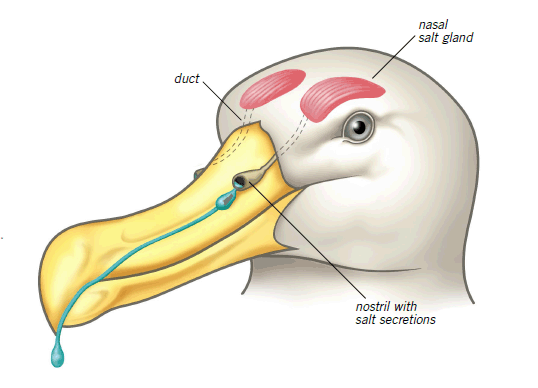Salt Removal on Demand
Design in Nature
Seabirds have a special gland that helps them drink seawater. Amazingly, a few other birds can develop this salt gland, as needed.
On Day Five of Creation Week, God created the birds and all creatures that live in the water. While some of these creatures live only in freshwater and others live only in saltwater, some creatures, including many birds, are able to live (and drink) in both freshwater and marine environments. Since about 97% of the earth’s water is saltwater, the ability to drink seawater presents a big advantage, but also a big challenge.
Seawater has about three times more salt than is found in the blood and other body fluids of most land-dwelling vertebrates. If any of these creatures are to survive drinking seawater, they must somehow rid themselves of excess salt.
The excretion of salt is one of the main jobs of the kidney, but few land-dwelling vertebrates have kidneys capable of handling seawater. Still, some vertebrates, including many birds, can live by drinking seawater. But for birds, it is not just their kidneys that make this possible. Rather, their survival depends on a pair of special salt glands located above the orbits of the eyes that excrete the excess salt via ducts that drain through the nostrils. This explains why some seagulls appear to have a runny nose.
Salt glands are present in at least 10 of the 27 living orders of birds, but functional salt-secreting glands are generally restricted to orders containing species that inhabit marine environments. The remarkable thing is that some birds that generally live on freshwater are capable of quickly adapting to live on seawater by developing salt glands. To some this might seem like “fast evolution,” but God has provided them with access to the amazing salt gland, which lies dormant until needed.
Salt Gland in Seabirds

When seabirds drink ocean water, huge quantities of salt enter their bloodstream. So God gave them a special gland to get rid of excess salt that would otherwise kill them. These birds actually have two salt glands, one above each eye. The excess salt flows down ducts through the nostrils and onto the beak. This concentrated salt solution then drips from the beak. That’s why seabirds sometimes look like they have a runny nose.
For example, a mallard duck living on freshwater ponds and lakes is capable of adapting in a matter of a few days to survive on seawater, permitting it to live in a coastal marine environment. When exposed to saltwater, small and inactive glands lying over the orbits of the eyes grow rapidly in size and salt-excreting ability. The consumption of excess salt triggers the release of hormones and other factors that promote the full functional development of the salt gland.
Even in unexpected ways we find marvelous evidence of God’s providential care for birds. God’s Word reminds us that not a single sparrow will fall to the ground apart from our heavenly Father’s will—so don’t be afraid when challenges come your way. You are worth more than many sparrows (Matthew 10:29–31).
Answers Magazine
January–March 2016
Discover the role of ancient Near Eastern writings in understanding Scripture and learn about some exotic animals that can only be explained by a Creator.
Browse Issue SubscribeRecommended Resources

Answers in Genesis is an apologetics ministry, dedicated to helping Christians defend their faith and proclaim the good news of Jesus Christ.
- Customer Service 800.778.3390
- © 2024 Answers in Genesis





